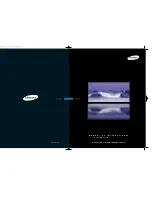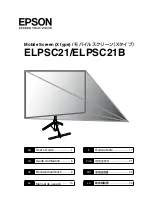
I TYPES OF AIR SAMPLES
Particulates
Air sampling for particulates includes both solid and liquid
aerosols. The particulates may be radioactive, toxic,
nuisance, or a combination of these characteristics. It is
important to know the particle size distribution of the
aerosols. Further the density of the particles must be taken
into account.
Gases
Air sampling for gases may be for radioactive, toxic,
nuisance, or oxygen deficiencent atmospheres or a
combination of these characteristics. The gases sampled are
single molecules but may be heavier than air.
Special Cases
Air sampling may involve both particulates and gases in
the same sample.
There are radioactive isotopes that are gases but have
particulate progeny. Those progeny initially exist as single
molecules but will quickly agglomorate onto dust particles in
the air, then they react as true particulates for air sampling
purposes. However, before those particulate progeny do
agglomorate onto dust particles they will react more like gas
molecules which will affect the sampling technique required.
Vapors of metals or organics may change to particles as
they cool or as they react with the atmosphere.
110
I TYPES OF AIR SAMPLES
Particulates
Air sampling for particulates includes both solid and liquid
aerosols. The particulates may be radioactive, toxic,
nuisance, or a combination of these characteristics. It is
important to know the particle size distribution of the
aerosols. Further the density of the particles must be taken
into account.
Gases
Air sampling for gases may be for radioactive, toxic,
nuisance, or oxygen deficiencent atmospheres or a
combination of these characteristics. The gases sampled are
single molecules but may be heavier than air.
Special Cases
Air sampling may involve both particulates and gases in
the same sample.
There are radioactive isotopes that are gases but have
particulate progeny. Those progeny initially exist as single
molecules but will quickly agglomorate onto dust particles in
the air, then they react as true particulates for air sampling
purposes. However, before those particulate progeny do
agglomorate onto dust particles they will react more like gas
molecules which will affect the sampling technique required.
Vapors of metals or organics may change to particles as
they cool or as they react with the atmosphere.
110
I TYPES OF AIR SAMPLES
Particulates
Air sampling for particulates includes both solid and liquid
aerosols. The particulates may be radioactive, toxic,
nuisance, or a combination of these characteristics. It is
important to know the particle size distribution of the
aerosols. Further the density of the particles must be taken
into account.
Gases
Air sampling for gases may be for radioactive, toxic,
nuisance, or oxygen deficiencent atmospheres or a
combination of these characteristics. The gases sampled are
single molecules but may be heavier than air.
Special Cases
Air sampling may involve both particulates and gases in
the same sample.
There are radioactive isotopes that are gases but have
particulate progeny. Those progeny initially exist as single
molecules but will quickly agglomorate onto dust particles in
the air, then they react as true particulates for air sampling
purposes. However, before those particulate progeny do
agglomorate onto dust particles they will react more like gas
molecules which will affect the sampling technique required.
Vapors of metals or organics may change to particles as
they cool or as they react with the atmosphere.
110
I TYPES OF AIR SAMPLES
Particulates
Air sampling for particulates includes both solid and liquid
aerosols. The particulates may be radioactive, toxic,
nuisance, or a combination of these characteristics. It is
important to know the particle size distribution of the
aerosols. Further the density of the particles must be taken
into account.
Gases
Air sampling for gases may be for radioactive, toxic,
nuisance, or oxygen deficiencent atmospheres or a
combination of these characteristics. The gases sampled are
single molecules but may be heavier than air.
Special Cases
Air sampling may involve both particulates and gases in
the same sample.
There are radioactive isotopes that are gases but have
particulate progeny. Those progeny initially exist as single
molecules but will quickly agglomorate onto dust particles in
the air, then they react as true particulates for air sampling
purposes. However, before those particulate progeny do
agglomorate onto dust particles they will react more like gas
molecules which will affect the sampling technique required.
Vapors of metals or organics may change to particles as
they cool or as they react with the atmosphere.
110
















































